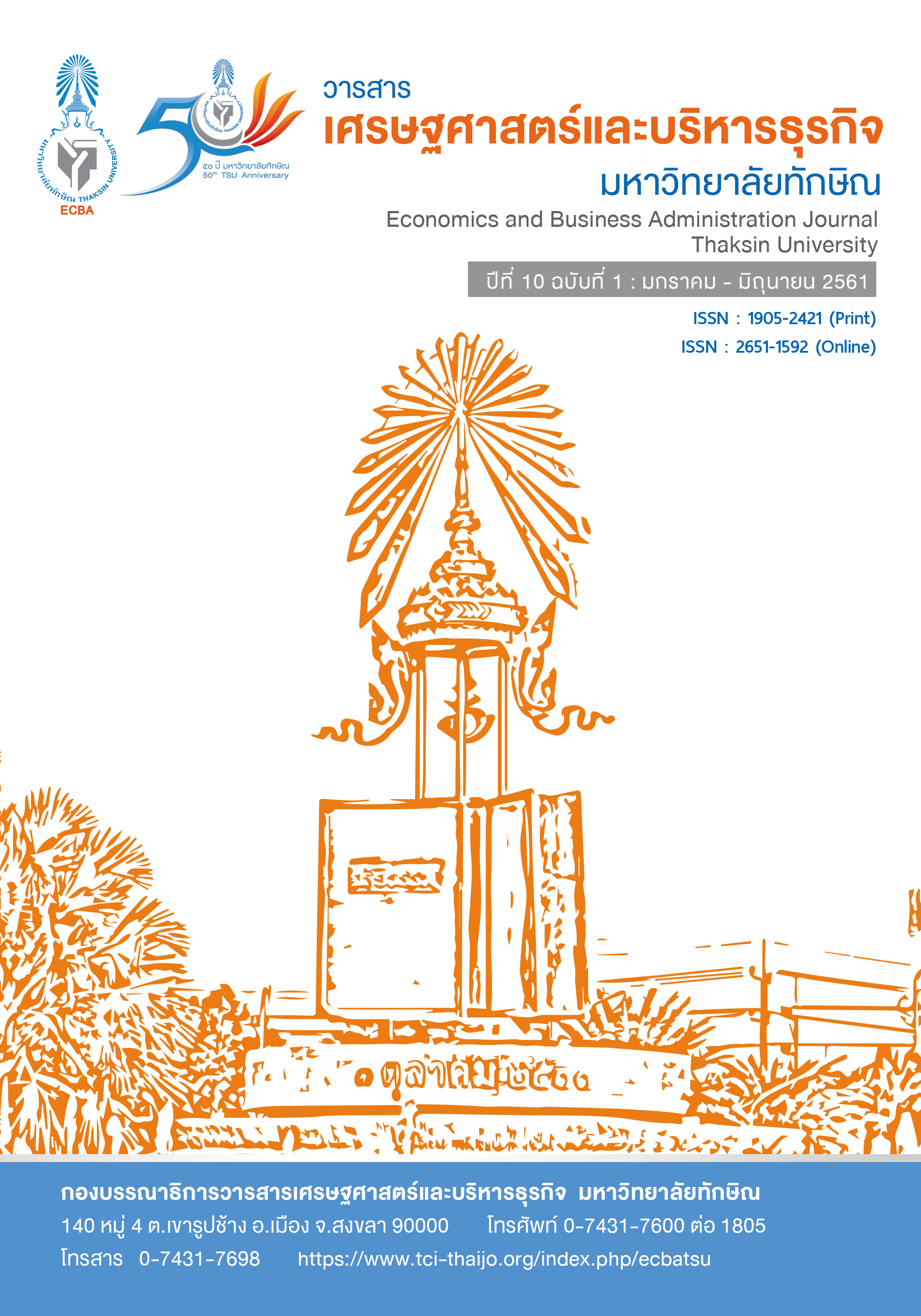Comparing the Service Marketing Mix of Online and Traditional Fashion Clothes Retails
Keywords:
Service marketing mix, online retails, traditional retailsAbstract
This research aims to compare the service marketing mix of online and traditional fashion clothes retails. The research samples consisted of 400 Thai teenagers experiencing in both online and offline shopping for fashion clothes. Sampling method was convenience sampling. The research instrument was online questionnaires. SPSS was employed for data analysis using frequency, percentage, mean, standard deviation and paired-sample t-test. The results indicated that (1) in the eyes of teenagers in Songkhla province, the overall the service marketing mix of online and traditional fashion clothes retails were different, and (2) Considering each dimensions of service marketing mix, Price, Place, Promotion, People and Physical evidence of online and traditional fashion clothes retails were different. While there was no difference in Product and Process dimensions. Entrepreneurs, government and private sectors, involving in trading sector especially fashion clothes retails should concern more about analysis each consumer segments because nowadays product development and technology change fast. Entrepreneurs should adapt their service marketing mix to satisfy the target consumers.
References
2.ฉวีวงศ์ บวรกีรติขจร. (2560). “การศึกษาการซื้อขายสินค้ากลุ่มแฟชั่นในสื่อสังคมออนไลน์”, Veridian E-Journal, Silpakorn University. 10(2). 2056-2071.
3.ทวีรัชต์ คงรชต. (2561). “ปัจจัยส่วนประสมทางการตลาดที่ส่งผลต่อพฤติกรรมการซื้อสินค้าผ่านระบบออนไลน์ของคนวัยทำงานในจังหวัดนนทบุรี”, วารสารเกษตรศาสตร์ธุรกิจประยุกต์. 12(16). 40-60.
4.นันทพร เขียนดวงจันทร์ ขวัญกมล ดอนขวา และสรียา วิจิตรเสถียร. (2561). “พฤติกรรมผู้บริโภคในการซื้อสินค้าผ่านสื่อสังคมออนไลน์ของคนในกลุ่มเจเนเรชันวาย”, Veridian E-Journal, Silpakorn University. 11(1). 561-577.
5.สำนักยุทธศาสตร์ สำนักงานพัฒนาธุรกรรมทางอิเล็กทรอนิกส์ (องค์การมหาชน) กระทรวงดิจิทัลเพื่อเศรษฐกิจและสังคม. (2560). รายงานผลการสำรวจพฤติกรรมผู้ใช้อินเทอร์เน็ตในประเทศไทย ปี 2560. สืบค้นเมื่อ 18 มิถุนายน 2561 จาก https://www.etda.or.th/publishing-detail/thailand-internet-user-profile-2017.html.
6.อรจันทร์ ศิริโชติ. (2556). การตลาดบริการ. สงขลา : ศูนย์หนังสือมหาวิทยาลัยทักษิณ.
7.Kotler, P., Kevin, K.L., Ang, S. H.,Tan, C. T., and Leong, S.M. (2018). Marketing Management: An Asian Perspective (7th ed.). Harlow, UK : Pearson.
8.Lovelock, C., Patterson, P., and Wirtz, J. (2015). An Asia-Pacific and Australian Perspective (6th ed.). Melbourne : Pearson Australia.
9.Zeithaml, V.A., Bitner, M.J. and Gremler, D. (2018). Services Marketing: Integrating Customer Focus across the Firm (7th ed.). New York : McGraw-Hill.




